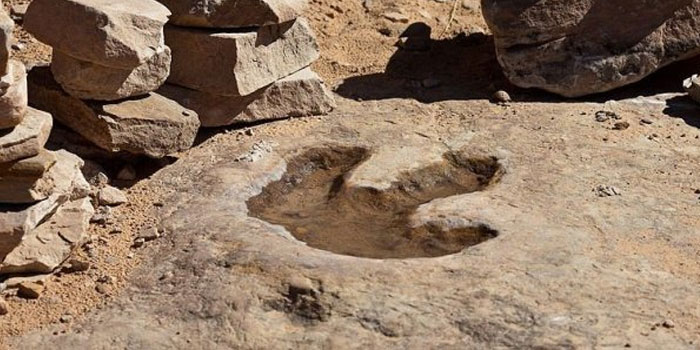WASHINGTON: Scientists have discovered a new dinosaur species in Tanzania with a heart-shaped tail that provides new clues to how ecosystems evolved on the African continent during the Cretaceous period.
The dinosaur discovered in Southwestern Tanzania is yet another member of the large, long-necked titanosaur sauropods, said researchers at the Ohio University in the US.
The partial skeleton was recovered from Cretaceous-age — 145.5 million to 65.5 million years ago — rocks exposed in a cliff surface in the western branch of the great East African Rift System, according to the study published in the journal PLOS ONE.
The dinosaur is called Mnyamawamtuka moyowamkia in reference to the name of the riverbed (Mtuka) in which it was discovered and due to the unique shape of its tail bones.
The initial discovery of Mnyamawamtuka took place in 2004, when part of the skeleton was found high in a cliff wall overlooking the seasonally dry Mtuka riverbed, with annual excavations continuing through 2008.
“Although titanosaurs became one of the most successful dinosaur groups before the infamous mass extinction capping the Age of Dinosaurs, their early evolutionary history remains obscure, and Mnyamawamtuka helps tell those beginnings, especially for their African-side of the story,” said Eric Gorscak, a recent PhD graduate of Ohio University.
“The wealth of information from the skeleton indicates it was distantly related to other known African titanosaurs, except for some interesting similarities with another dinosaur, Malawisaurus, from just across the Tanzania-Malawi border,” said Gorscak, current research associate at the Field Museum of Natural History in the US.
Titanosaurs are best known from Cretaceous-age rocks in South America, but other efforts by the team include new species discovered in Tanzania, Egypt, and other parts of the African continent that reveal a more complex picture of dinosaurian evolution on the planet.
“The discovery of dinosaurs like Mnyamawamtuka and others we have recently discovered is like doing a four-dimensional connect the dots,” said Patrick O’Connor, a professor at Ohio University.
“Each new discovery adds a bit more detail to the picture of what ecosystems on continental Africa were like during the Cretaceous, allowing us to assemble a more holistic view of biotic change in the past,” O’Connor said.
Mnyamawamtuka and the other Tanzanian titanosaurs are not the only animals discovered by the research team.
Remains of bizarre relatives of early crocodiles, the oldest evidence for “insect farming,” and tantalising clues about the early evolution of monkeys and apes have been discovered in recent years.
Such findings from the East African Rift provide a crucial glimpse into ancient ecosystems of Africa and provide the impetus for future work elsewhere on the continent. (AGENCIES)


